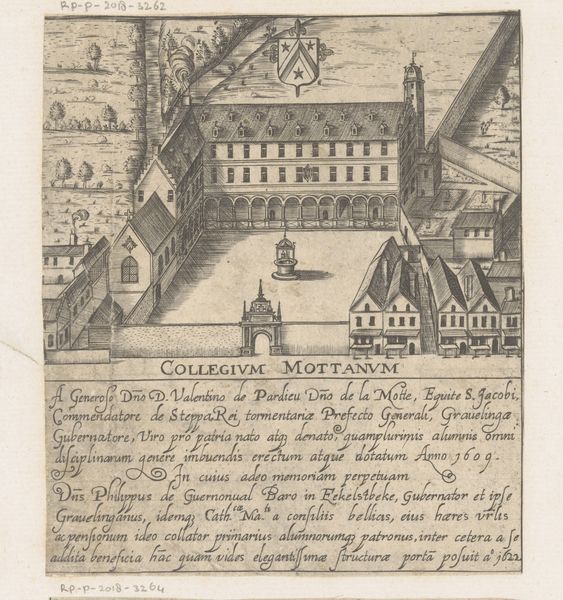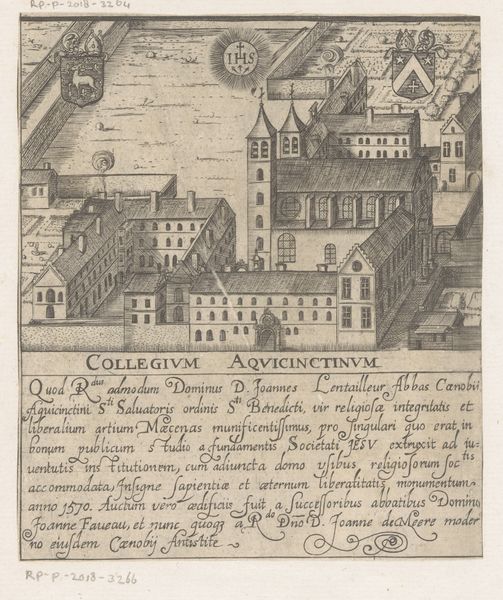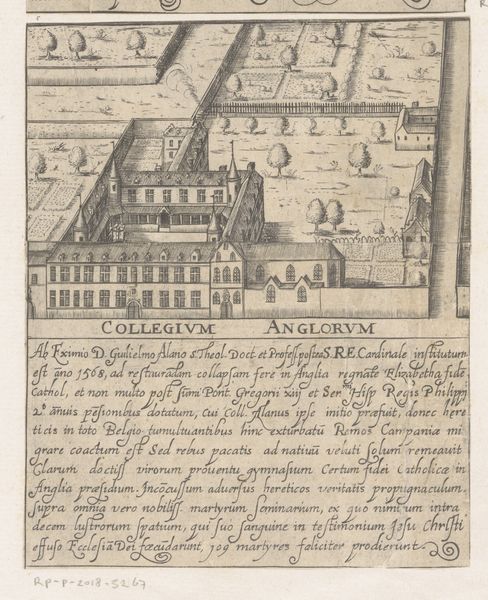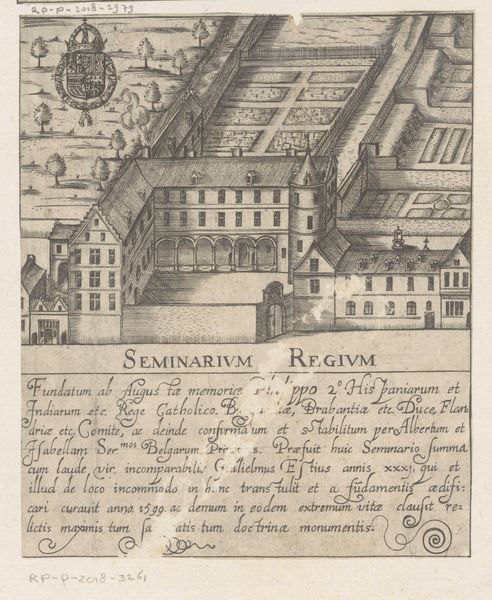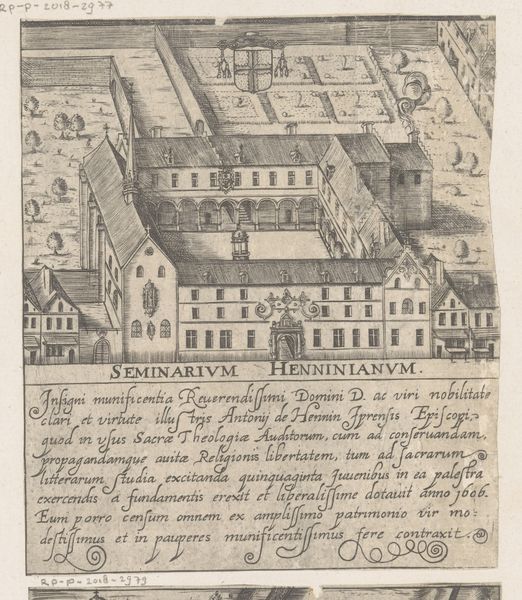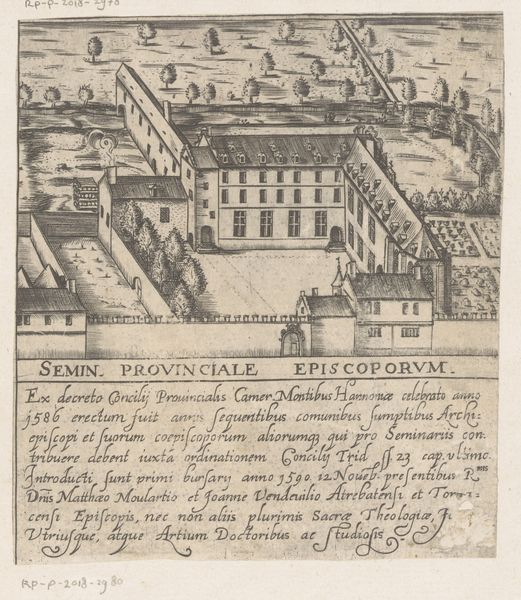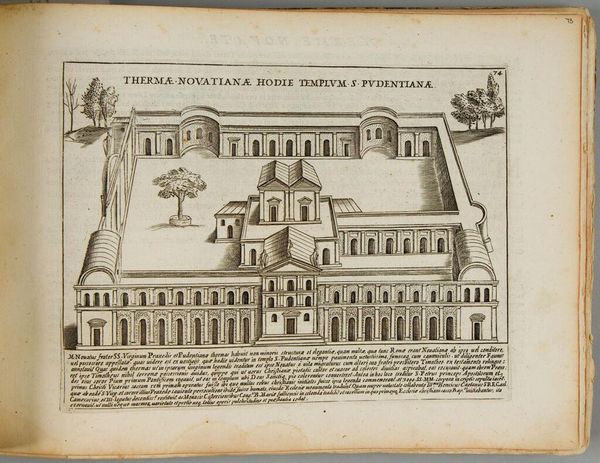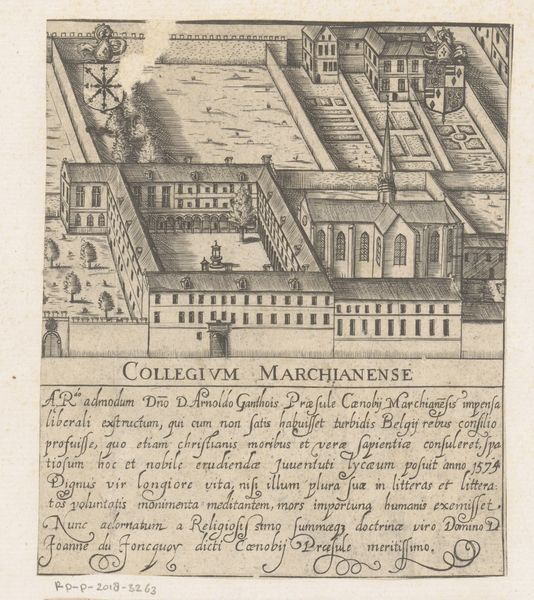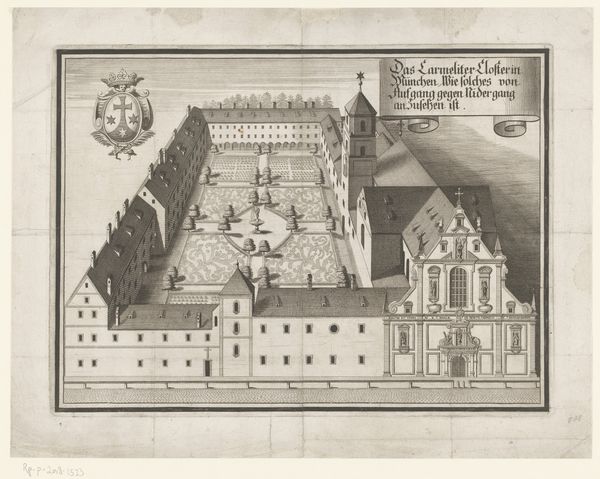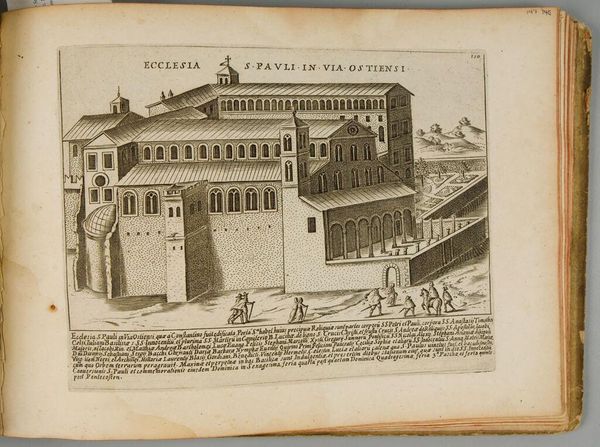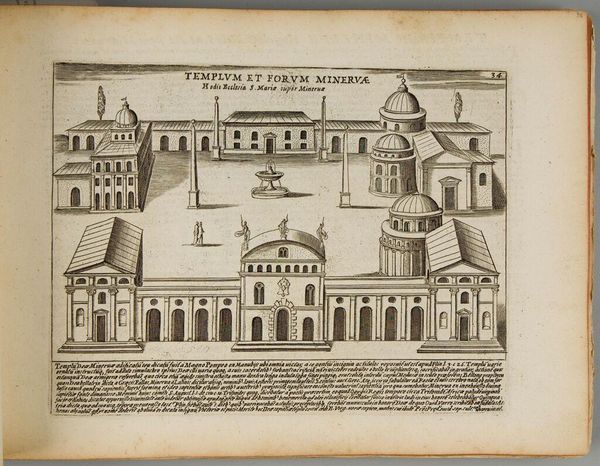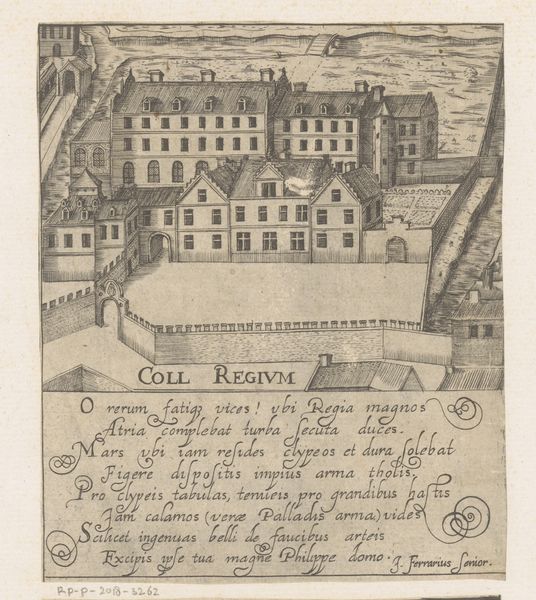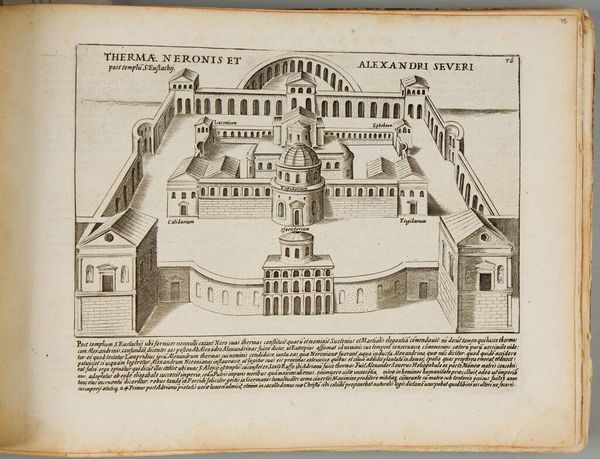
drawing, print, etching, paper, ink, engraving, architecture
#
drawing
#
baroque
# print
#
etching
#
landscape
#
paper
#
ink
#
cityscape
#
engraving
#
architecture
Dimensions: height 133 mm, width 124 mm
Copyright: Rijks Museum: Open Domain
This print, made by Filippo Ferrari, depicts the Seminarie van Moulartio. It shows a building and its surroundings in remarkable detail, all rendered through the exacting medium of engraving. The materiality of this print speaks volumes. An engraving like this begins with a metal plate, into which the image is painstakingly incised using specialized tools called burins. The incised lines hold the ink, which is then transferred to paper under great pressure. It’s an indirect process, demanding both technical skill and artistic vision. Consider the labor involved. Each line represents a deliberate mark, a physical engagement with the metal. The precision required suggests a highly trained artisan, working within a well-established tradition. This kind of printmaking was central to the distribution of knowledge and imagery in early modern Europe. It was a vital, commercial enterprise that provided work for artisans and fueled the spread of information and artistic ideas. Prints like these were essential for circulating architectural ideas and solidifying the cultural influence of institutions. Looking closely at the print, we can appreciate the artist's technique and also recognize the value and labor embedded in its creation.
Comments
No comments
Be the first to comment and join the conversation on the ultimate creative platform.
